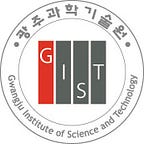Gwangju Institute of Science and Technology Researchers Design AI-based Model that Predicts Extreme Wildfire Danger
Combining artificial intelligence and weather forecast models can boost extreme wildfire forecasts by up to 7 days, finds new study
Accurate wildfire risk prediction is essential for an efficient allocation of resources for their mitigation. Current forecast models are, however, incapable of providing sufficiently long lead times. Now, researchers have a developed a hybrid wildfire forecast system that combines deep learning algorithms with existing weather forecast models. The new AI-based system can predict wildfire conditions farther ahead with better coverage than that provided by conventional approaches.
Raging wildfires occurring worldwide have caused tremendous economic damage and loss of life. Knowing when and where a widespread fire could happen in advance can improve fire prevention and resource allocation. However, available forecast systems only provide limited information. Moreover, they do not provide lead times long enough to gain useful regional details.
Scientists have now applied a deep learning algorithm to enhance the prediction of wildfire danger in the Western United States. Researchers from South Korea and the United States developed a hybrid method that combines AI techniques and weather forecasts to produce improved predictions of extreme fire danger out to one week at finer scales (4km x 4km resolution), increasing its utility for fire suppression and management.
“We tried numerous approaches to integrate machine learning with traditional weather forecast models to improve forecasts of wildfire risks. This study is a big step forward as it demonstrates the potential of such an effort for enhancing fire danger prediction without the need for extra computing power,” says lead author Dr. Rackhun Son, a recent Ph.D. from the Gwangju Institute of Science and Technology (GIST) in South Korea, who currently works at The Max Planck Institute for Biogeochemistry in Germany. “The fire danger forecasts could be improved further using constant development in both Earth System Models and recent AI developments,” he adds.
While data-driven AI methods have shown excellent capabilities for inferring things, explaining why and how the inferences are arrived at still remains a challenge. This has led to AI being labeled a black box. “But when AI was combined with computer models based on physical principles, we could diagnose what was going on inside this black box,” says co-author Prof. Simon Wang of Utah State University, USA. “The AI-based predictions associated with extreme levels of fire danger are well grounded to strong winds and specific geographical characteristics, including high mountains and canyons in the Western United States that have been traditionally difficult to resolve with coarser models.”
Computational efficiency is another major advantage of this method. Conventional methods of predicting fire risks at finer spatial resolutions, a process called “regional downscaling,” are often computationally demanding, expensive, and time-consuming. “Although comparable computational resources were required at the developing stage, once the training task for the AI was complete, i.e., performed once initially, it only took few seconds to use that component with the weather forecast model to produce forecasts for the rest of the season,” says co-author Prof. Kyo-Sun Lim at Kyungpook National University, Korea. Therefore, the newly developed AI-based method with the ability to make accurate high-resolution forecasts in a shorter time was much more cost-effective compared to conventional forecast systems.
“In this study, the AI is only tested for fire danger forecasting in the Western United States. In the future, it could be applied to other types of weather extremes or to other parts of the world,” said co-author Dr. Philip J. Rasch of the Pacific Northwest National Laboratory and the University of Washington. “The flexibility of our AI method can help forecast any weather-related feature.”
The research has been published in the Journal of Advances in Modeling Earth Systems on 22 September 2022.
Reference
Authors: Rackhun Son(1,8), Po-Lun Ma(2), Hailong Wang(2), Philp J. Rasch(2,3), Shih-Yu (Simon) (5) Wang(4), Hyungjun Kim(5,9,10), Jee-Hoon Jeong(6), Kyo-Sun Sunny Lim(7), Jin-Ho Yoon(8)
Title of original paper: Deep Learning provides substantial improvements to county-level fire weather forecasting over the western United States
Journal: Journal of Advances in Modeling Earth Systems
DOI: https://doi.org/10.1029/2022MS002995
Affiliations:
(1) Department of Biogeochemical Integration, Max Planck Institute for Biogeochemistry
(2) Pacific Northwest National Laboratory
(3) Department of Atmospheric Science, University of Washington
(4) Department of Plants, Soils, and Climate, Utah State University Logan
(5) Moon Soul Graduate School of Future Strategy, Korea Advanced Institute of Science and Technology
(6) Faculty of Earth and Environmental Sciences, Chonnam National University
(7) School of Earth System Sciences, Kyungpook National University
(8) School of Earth Sciences and Environmental Engineering, Gwangju Institute of Science and Technology
(9) Department of Civil and Environmental Engineering, Korea Advanced Institute of Science and Technology
(10) Institute of Industrial Science, The University of Tokyo
About the Gwangju Institute of Science and Technology (GIST)
The Gwangju Institute of Science and Technology (GIST) is a research-oriented university situated in Gwangju, South Korea. Founded in 1993, GIST has become one of the most prestigious schools in South Korea. The university aims to create a strong research environment to spur advancements in science and technology and to promote collaboration between international and domestic research programs. With its motto of “A Proud Creator of Future Science and Technology,” GIST has consistently received one of the highest university rankings in Korea.
Website: http://www.gist.ac.kr/
About the author
Jin-Ho Yoon is a Professor of Earth Sciences and Environmental Engineering at GIST, Korea. His group focuses on understanding and predicting weather-climate extremes under climate change. Prof. Yoon’s group is also analyzing aerosol-cloud-precipitation interactions to understand the distribution and characteristics of clouds. Before coming to GIST, he was a scientist (level 3) at Pacific Northwest National Laboratory. In 2004, Prof. Yoon received a Ph.D. in Atmospheric Sciences from Iowa State University, USA.
